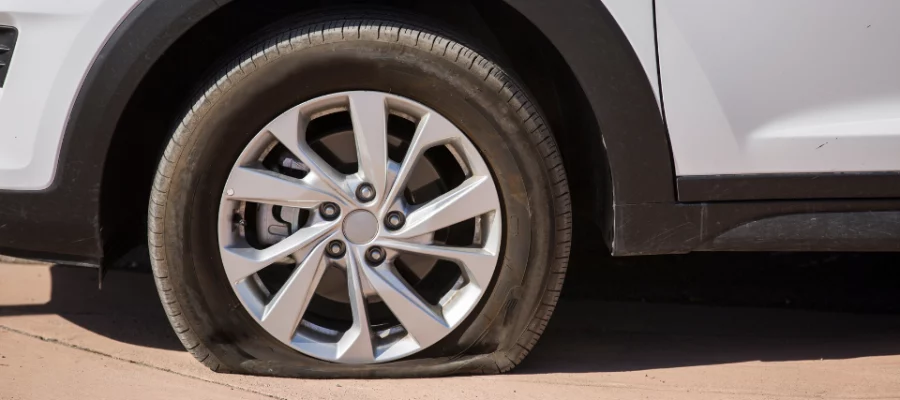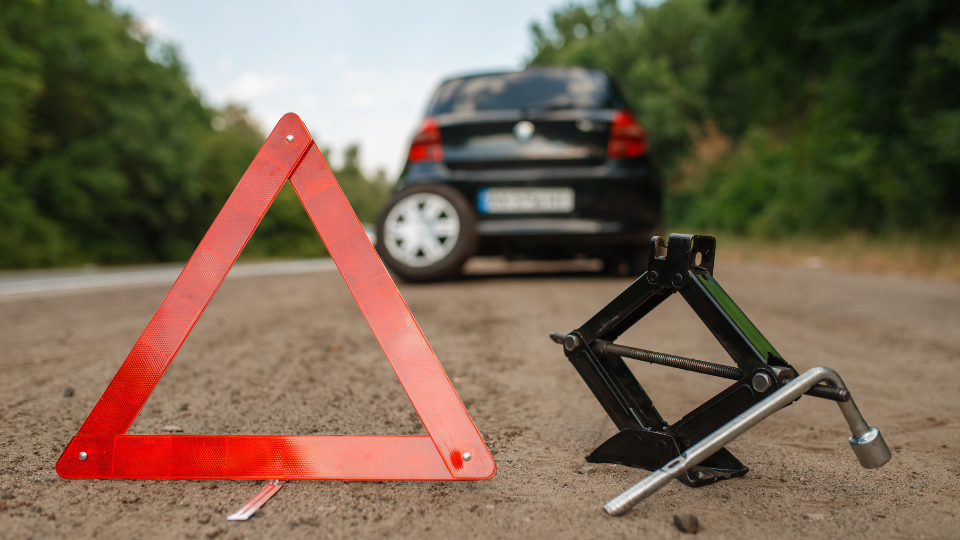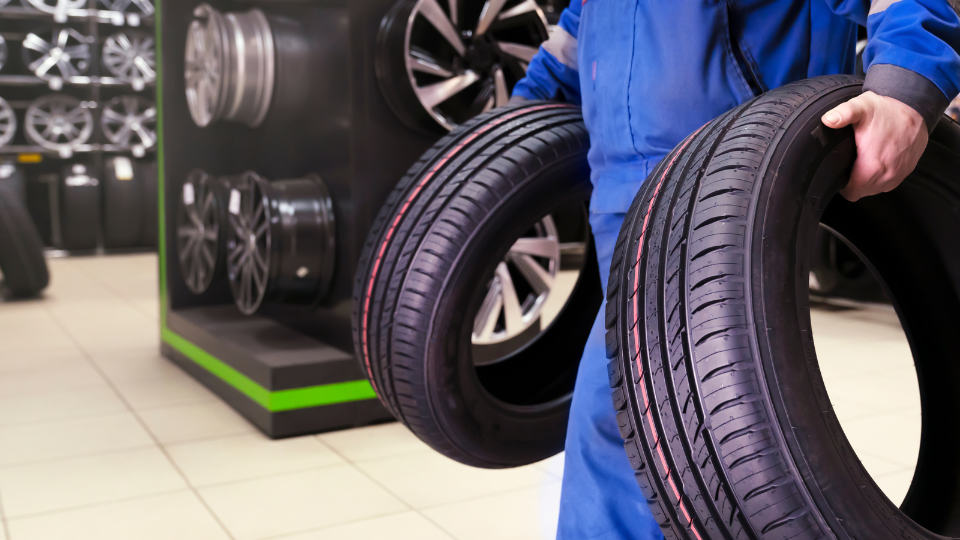Do you know how often you should change your tires? It’s a question that many drivers often overlook, but maintaining the right tire condition is crucial for safety and performance on the road. That’s why at Kwik Kar Mesquite, we’re here to provide you with all the information you need. As one of the trusted Mesquite Auto Repair Shops, we take pride in offering expert advice and quality tire services.
Whether you’re a seasoned driver or a new one, understanding when to change your tires is essential. The frequency of tire changes depends on various factors including the type of roads you drive on, your driving habits, and the condition of the tires themselves. Our team of specialists is here to guide you and ensure your tires are maintained in top condition.
Tire maintenance plays a significant role in extending their lifespan and ensuring maximum safety. With our expertise, we can help you determine if your tires need to be changed and recommend the right time to do so. Ensure your safety – visit Kwik Kar Mesquite and let us keep your tires in top condition.
Related:
How Long Does Vehicle Inspection Take?
Spot Starter Problems: Early Warning Signs
Why Tire Maintenance is Crucial for Your Safety
Ensuring proper tire maintenance is essential for your safety on the road. Your tires are the only point of contact between your vehicle and the road surface, and their condition directly affects your vehicle’s handling, braking, and overall performance. Here are some key reasons why prioritizing tire maintenance is vital:
1. Traction and Grip:
2. Braking Distance:
- Bald tires take longer to come to a complete stop, increasing your braking distance. In emergency situations, this can lead to accidents or collisions.
3. Hydroplaning:
- Tires with insufficient tread depth are more prone to hydroplaning, where a layer of water builds up between the tire and the road surface, causing a loss of control. This is particularly dangerous during heavy rain or on wet roads.
4. Stability and Handling:
- Worn-out tires can compromise the stability and handling of your vehicle, especially during cornering or sudden maneuvers. This can reduce your vehicle’s responsiveness and increase the likelihood of accidents.
By regularly maintaining your tires and replacing them when necessary, you can ensure optimal safety on the road and minimize the risk of accidents.
Top Signs It’s Time to Replace Your Tires
Knowing when it’s time to replace your tires is essential for your safety and the performance of your vehicle. Here are some signs that indicate it’s time to change your tires:
1. Tread Depth:
- The tread depth of your tires plays a crucial role in maintaining traction and grip. Tread depth decreases as tires wear out. When the tread reaches 2/32 of an inch (1.6mm) or less, it’s time to replace your tires. Use a gauge or perform the penny test to measure tread depth. Place a penny into the tread groove with Lincoln’s head pointing downward. If you can see the top of Lincoln’s head on the penny, the tread is too worn and the tire needs to be replaced. For more detailed information, you can refer to this guide on how to measure tread depth.
2. Uneven Wear:
- Inspect your tires regularly for any signs of uneven wear. Uneven wear can indicate issues with tire alignment, suspension, or improper inflation. If you observe uneven wear patterns on your tires, have them inspected by a professional. Tire replacement may be necessary if significant differences are found.
3. Cracks or Bulges:
- Check the sidewalls of your tires for cracks, bulges, or bubbles. These can indicate structural damage or weak points in the tire, which can lead to a blowout. If you notice any of these signs, it’s crucial to replace the tire immediately.
4. Age:
- Even if your tires have sufficient tread depth and appear to be in good condition, they can still deteriorate over time. The rubber compounds in tires break down and become less flexible, increasing the risk of blowouts or other tire failures. As a general guideline, tires should be replaced every 6 to 10 years, regardless of their condition. For more details, check out this article on tire aging.
By paying attention to these signs and regularly inspecting your tires, you can ensure your safety on the road and prevent any potential tire-related issues.
Key Factors Influencing Tire Lifespan
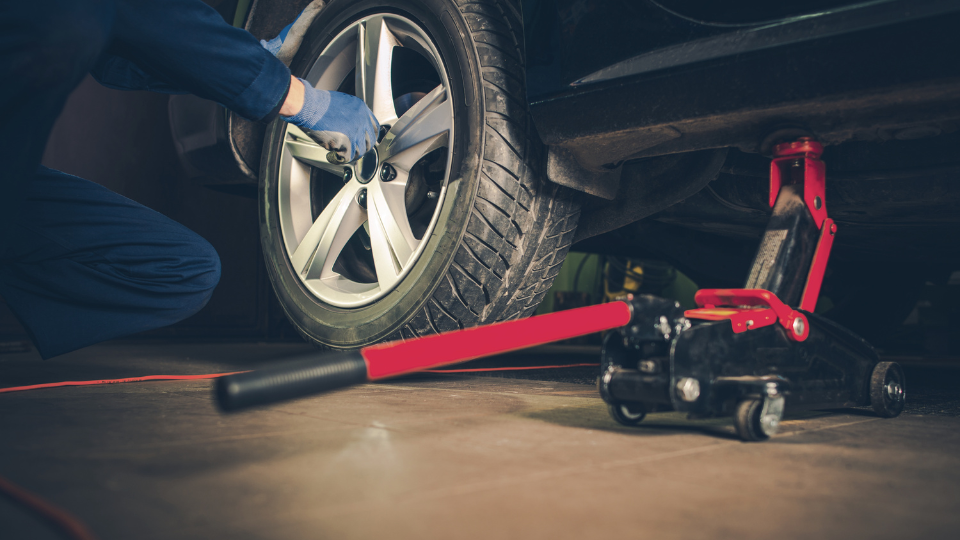
Various factors can impact the lifespan of your tires. Understanding these factors can help you determine when to change your tires and ensure they last as long as possible. Here are some key factors that influence tire lifespan:
1. Driving Habits:
- Your driving habits greatly influence tire wear. Aggressive driving, excessive speeding, hard braking, and frequent cornering can accelerate tire wear. Additionally, carrying heavy loads or towing can put extra stress on your tires, reducing their lifespan.
2. Road Conditions:
- The type of roads you regularly drive on can impact tire wear. Rough or poorly maintained roads, potholes, and debris can cause premature tire damage. Similarly, driving on gravel or off-road surfaces can also wear out tires more quickly.
3. Climate:
- Extreme temperatures can affect tire performance and longevity. High heat can cause the rubber to deteriorate faster, while cold temperatures can make the rubber harder and less flexible. Both situations can lead to increased tire wear and reduced lifespan.
4. Maintenance:
- Regular tire care, including proper inflation, alignment, and rotation, is crucial for maximizing tire longevity. Tires that are underinflated or overinflated can wear unevenly, reducing their lifespan. Additionally, improper wheel alignment can cause uneven tire wear and premature tire replacement.
By considering these factors and adjusting your driving habits accordingly, you can maximize the lifespan of your tires and save money in the long run.
When Should You Change Your Tires? Recommended Intervals

While there’s no set mileage or time interval for tire replacement, there are some general guidelines to follow. The frequency of tire changes can vary depending on the factors mentioned earlier. Here are some recommended intervals for tire replacement:
1. Tread Depth:
- As mentioned earlier, tires should be replaced when the tread depth reaches 2/32 of an inch (1.6mm) or less. To ensure your safety, it’s best to replace your tires before they reach this minimum tread depth.
2. Age:
- As a general guideline, tires should be replaced every 6 to 10 years, regardless of their tread depth or condition. This is because the rubber compounds in tires degrade over time, increasing their likelihood of failure.
3. Regular Inspections:
- Regularly inspect your tires for signs of wear, damage, or other issues. If you notice any significant problems, such as bulges, cracks, or uneven wear, it’s important to have your tires inspected by a professional and consider replacement if necessary.
4. Manufacturer Recommendations:
It’s worth noting that these intervals are general recommendations, and individual situations may vary. Consulting with a tire professional can provide you with personalized advice based on your specific driving habits, road conditions, and tire type.
Step-by-Step Guide: Checking Your Tire Tread Depth
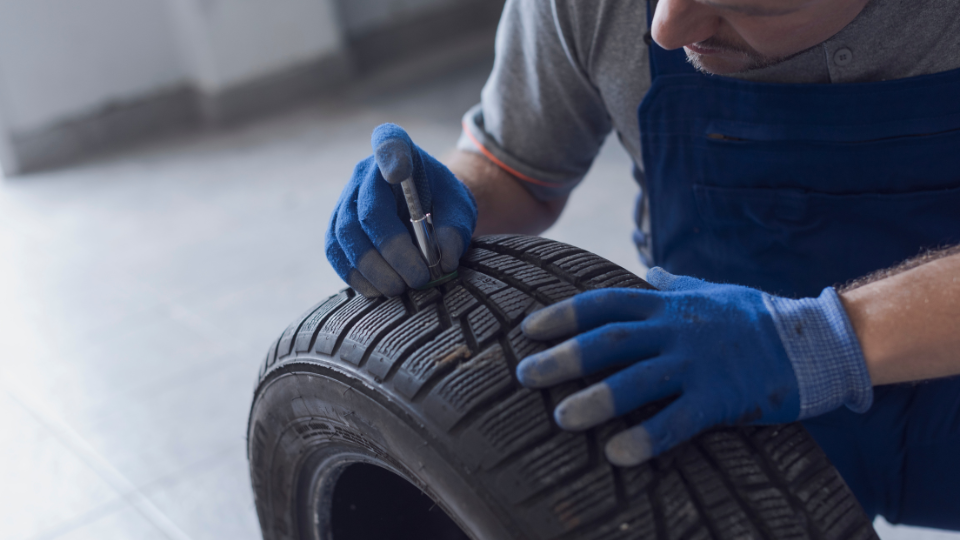
Measuring tire tread depth is a crucial aspect of tire maintenance. It allows you to determine if your tires need to be replaced to ensure optimal safety and performance. Follow these steps to check your tire tread depth:
1. Use a Tread Depth Gauge:
- A tread depth gauge is a simple tool that measures the depth of the tire tread. Insert the gauge into the tread groove and record the measurement.
2. The Penny Test:
- If you don’t have a tread depth gauge, you can use the penny test as a quick and easy method. Grab a penny and insert it into the tread groove with Lincoln’s head upside down. If you can see the top of Lincoln’s head, the tread is too worn, and it’s time to replace your tires.
3. Repeat the Process:
- Repeat the tread depth measurement on multiple spots across each tire. This will give you an idea of the tire’s overall condition and whether it’s time for replacement.
Remember, maintaining adequate tread depth is crucial for optimal traction and grip on the road. If your tires don’t pass the tread depth test, it’s time to replace them for your safety.
Choosing the Right Tires for Your Vehicle
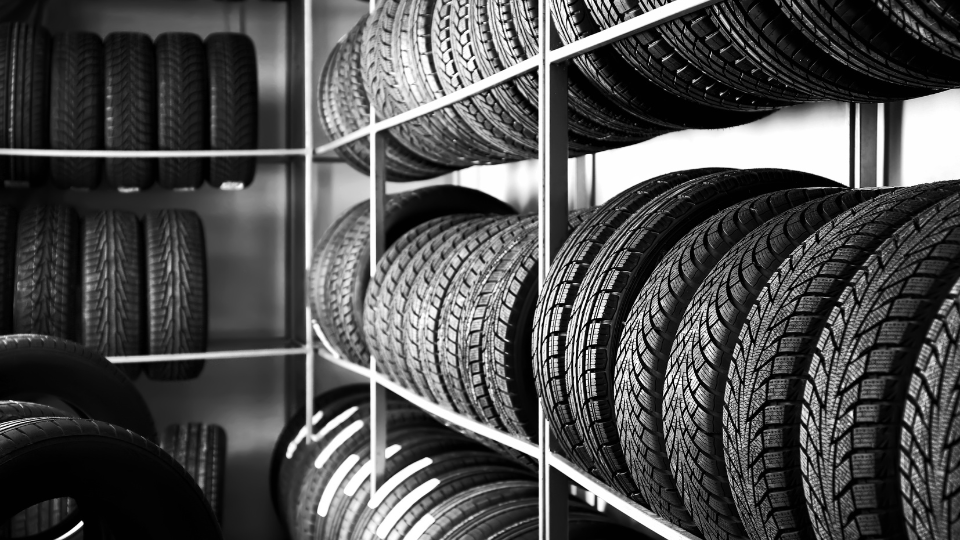
Selecting the correct tires for your vehicle is vital for ensuring top performance and safety. With various tire types and options available, it’s important to consider the following factors when choosing new tires:
Tire Size:
- Ensure you select tires that are compatible with your vehicle’s specific tire size. The correct tire size is typically indicated on the sidewall of your current tires or in your vehicle’s owner’s manual. Consult a tire size guide to find the correct size for your vehicle.
Tire Type:
- Consider the type of tires suitable for your driving needs. Tire options include all-season, summer, winter, and performance types. Each type offers different features and performance characteristics, so choose the one that aligns with your driving habits and the local climate.
Tread Pattern:
- Affects traction, handling, and noise levels. Different tread patterns are designed for specific road conditions, such as highway driving, off-road adventures, or wet and snowy surfaces. Consider your driving environment and select a tread pattern that suits your needs.
Budget:
- Determine your budget for tire purchase. While it’s important to invest in quality tires, there are options available to suit different budgets. Consider the longevity, performance, and warranty offered by different tire brands and models.
When in doubt, consult with a tire professional who can recommend the most suitable tires for your vehicle based on your driving habits, local climate, and budget.
Essential Tips for Proper Tire Care and Maintenance
Proper tire care and maintenance can significantly extend the lifespan of your tires and ensure optimal safety. Keep your tires in excellent condition with these essential tips:
1. Regularly Check Tire Pressure:
- Maintaining the correct tire pressure is crucial for tire performance and longevity. Check your tire pressure at least once a month and adjust it according to your vehicle manufacturer’s recommendations.
2. Rotate Your Tires:
- Regular tire rotation helps distribute the wear evenly among all four tires. This can increase their lifespan and enhance overall performance. Refer to your vehicle owner’s manual for recommended rotation intervals.
3. Maintain Proper Wheel Alignment:
- Misaligned wheels can cause uneven tire wear and affect handling. Regular wheel alignment ensures your tires wear evenly and your vehicle drives smoothly. Regularly inspect and adjust your wheel alignment as necessary.
4. Avoid Overloading:
5. Avoid Sudden Maneuvers:
- Rapid acceleration, hard braking, and aggressive cornering can wear out your tires faster. Practice smooth driving habits to minimize unnecessary tire wear.
6. Clean Your Tires:
- Regularly clean your tires to remove dirt, debris, and brake dust. This not only keeps them looking good but also prevents corrosion and damage to the rubber.
By following these tips and incorporating them into your regular vehicle maintenance routine, you can ensure your tires last longer and provide maximum safety and performance.
Advantages of Timely Tire Replacement
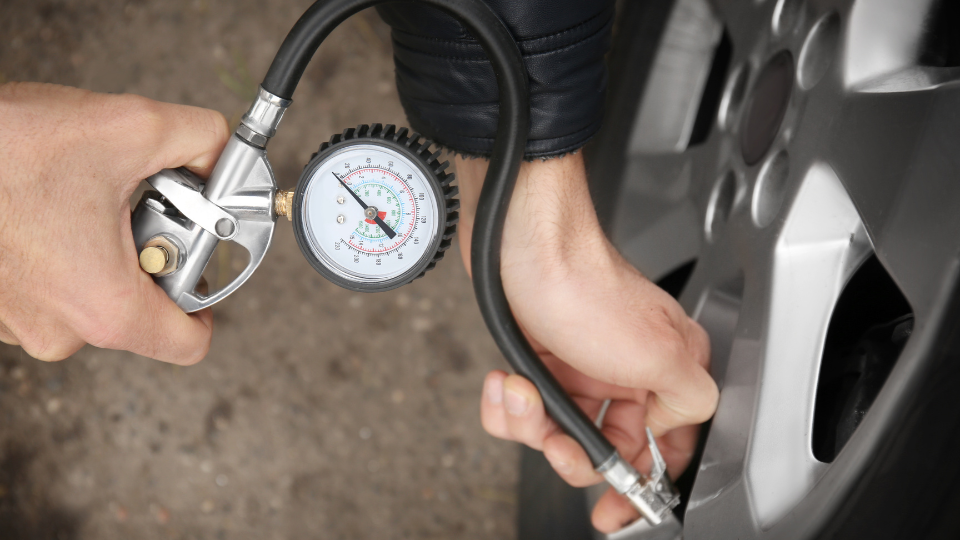
Replacing tires on time offers multiple benefits, enhancing both safety and vehicle performance. Here are some benefits of replacing your tires at the right time:
1. Improved Safety:
- New tires with adequate tread depth and in good condition provide better traction, grip, and stability on the road. This enhances your safety, especially during challenging driving conditions.
2. Better Fuel Efficiency:
- Worn-out tires with low tread depth can increase rolling resistance, resulting in reduced fuel efficiency. By replacing your tires when necessary, you can improve your vehicle’s fuel economy.
3. Enhanced Performance:
- New tires improve handling, responsiveness, and braking. This can greatly enhance your driving experience and confidence on the road.
4. Long-Term Savings:
- While purchasing new tires may seem like an investment, timely tire replacement can save you money in the long run. By preventing accidents, improving fuel efficiency, and maximizing tire lifespan, you can avoid costly repairs and replacements down the line.
Prioritizing safety and staying proactive with tire maintenance will ensure you enjoy these advantages and have peace of mind while driving.
Frequently Asked Questions About Tire Maintenance
1. How frequently should I check my tire pressure?
– Checking your tire pressure at least once a month is recommended.Temperature changes can impact tire pressure, so it’s important to monitor it regularly.
2. How frequently should I rotate my tires?
– The general guideline for tire rotation is every 5,000 to 7,500 miles. However, check your vehicle’s owner’s manual for the manufacturer’s specific recommendations.
3. Can I replace only one tire instead of all four?
– To maintain consistent performance and handling, it’s ideal to replace all four tires simultaneously. However, if only one tire needs replacement due to damage or wear, consider selecting a tire with the same tread pattern and similar wear characteristics as the remaining tires.
4. How can I extend the lifespan of my tires?
– Regularly check tire pressure, rotate your tires, maintain proper wheel alignment, avoid overloading your vehicle, and practice smooth driving habits. These steps can help extend the lifespan of your tires.
5. What should I do if I notice a puncture or damage to my tire?
– If you notice a puncture or damage to your tire, it’s important to have it inspected by a professional. Depending on the severity of the damage, it may be possible to repair the tire, or it may require replacement.
Remember, when it comes to tire maintenance, your safety should always be the top priority. By following recommended guidelines and seeking professional advice when needed, you can ensure your tires are in optimal condition and enjoy a safe and smooth driving experience.
Conclusion
Regular tire care and timely replacements are crucial for your safety on the road. By understanding the signs that indicate it’s time to change your tires, considering key factors that influence tire lifespan, and following proper tire care practices, you can ensure optimal performance and longevity of your tires.
At Kwik Kar Mesquite, we prioritize your safety and offer expert advice and services to keep your tires in top shape. Don’t overlook the importance of tire maintenance – visit us today to receive personalized assistance and ensure your tires are in optimal condition.
Contact us for more information
Have Questions About Tire Maintenance or When to Replace Your Tires? Feel free to contact our team today for more information and personalized assistance!
Contact us now to book an appointment
